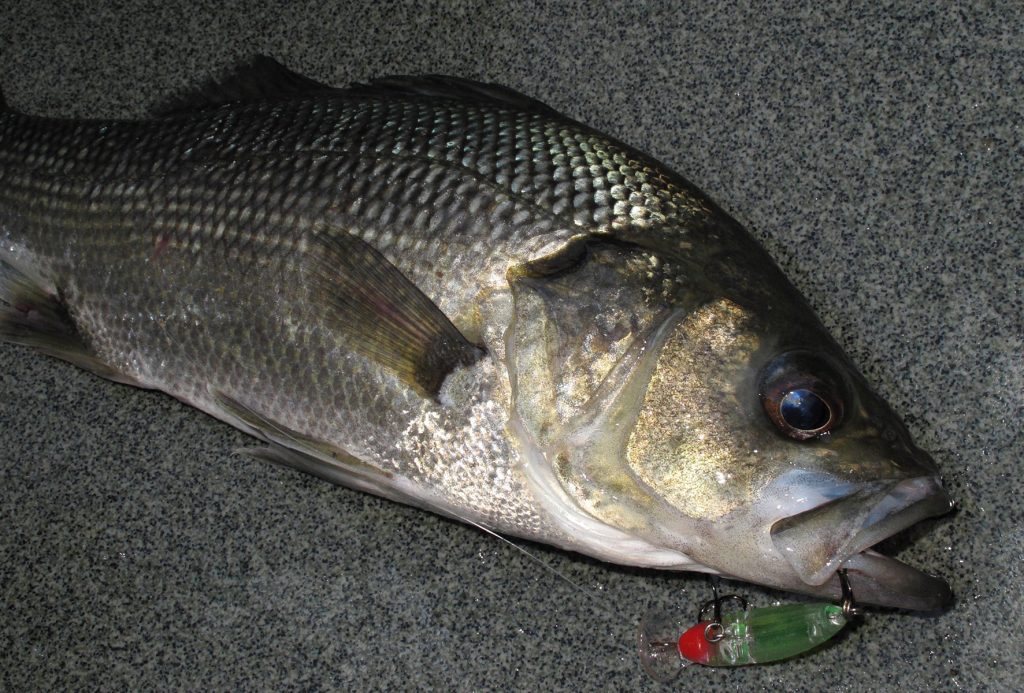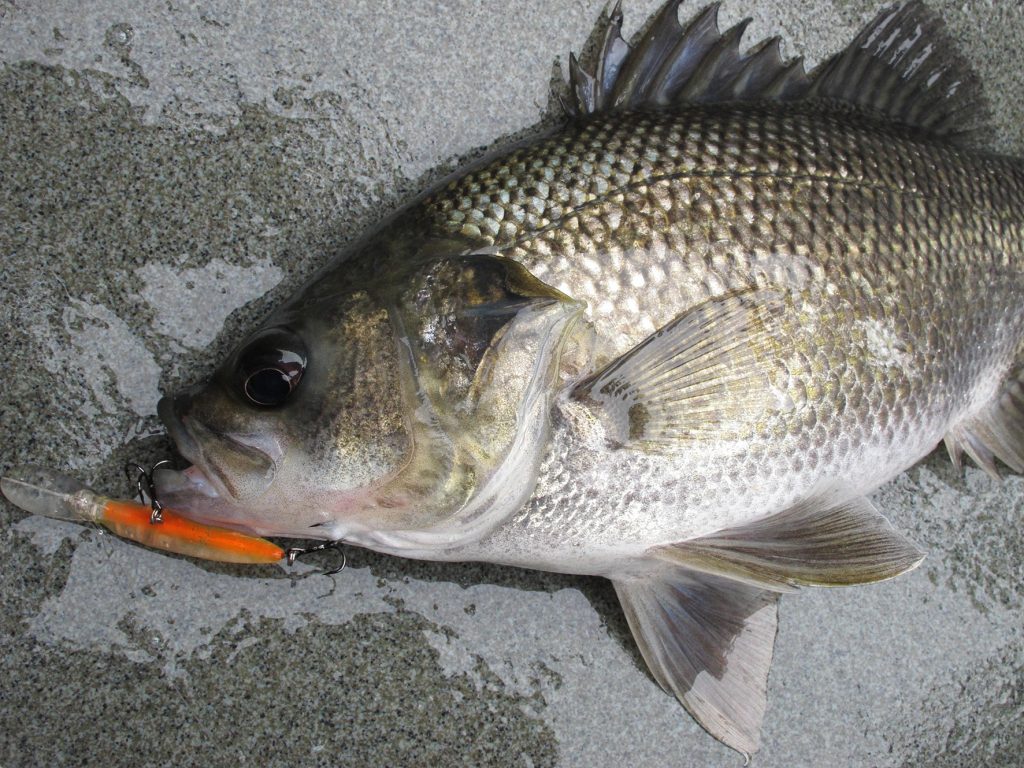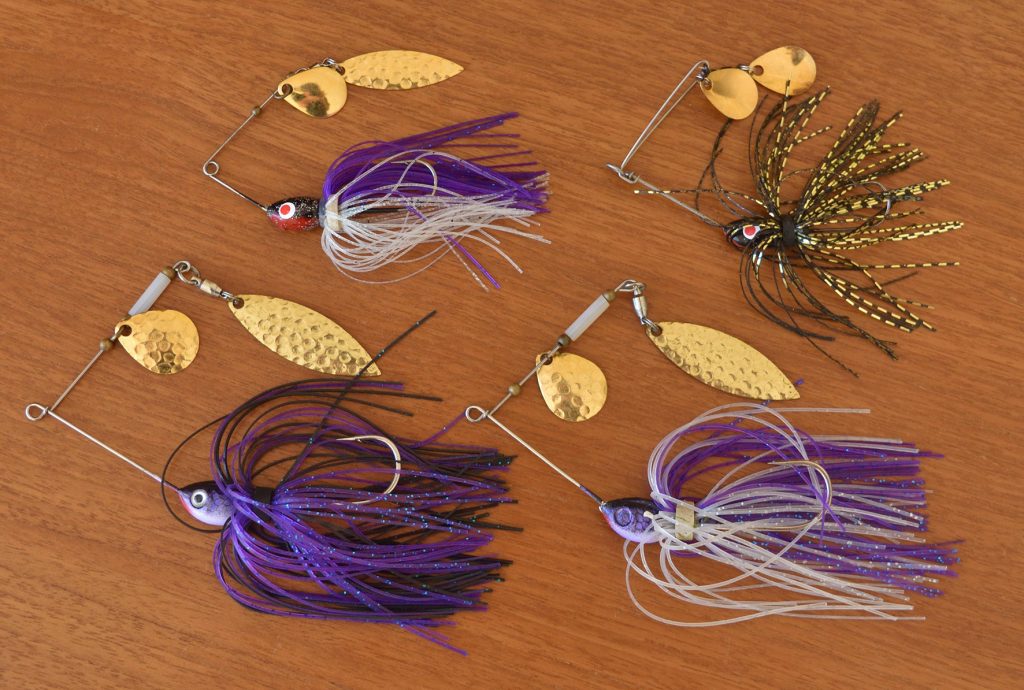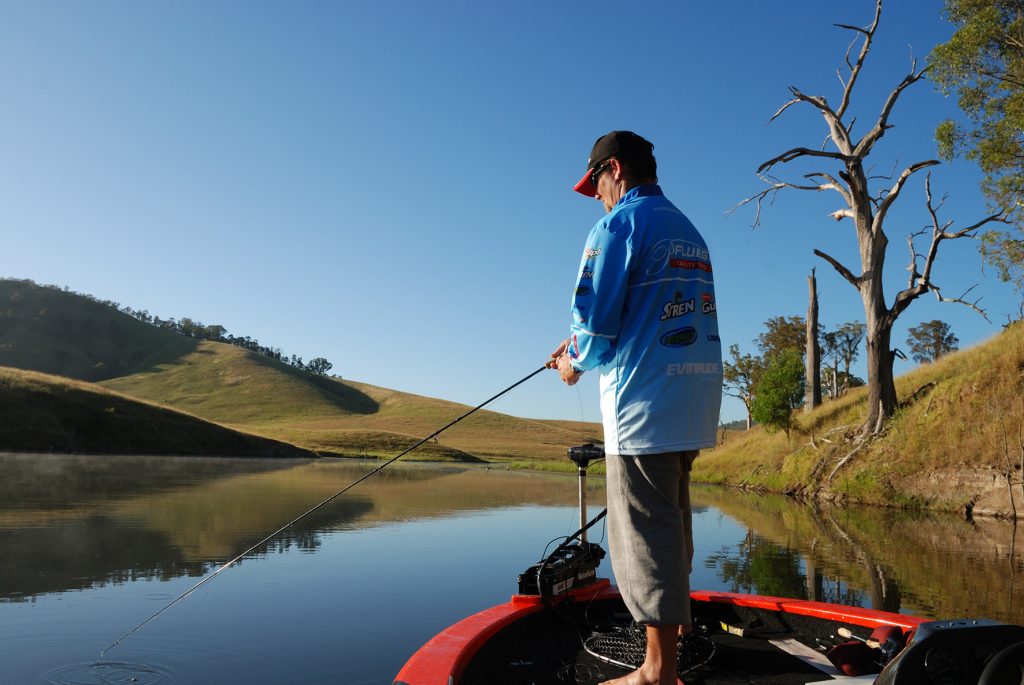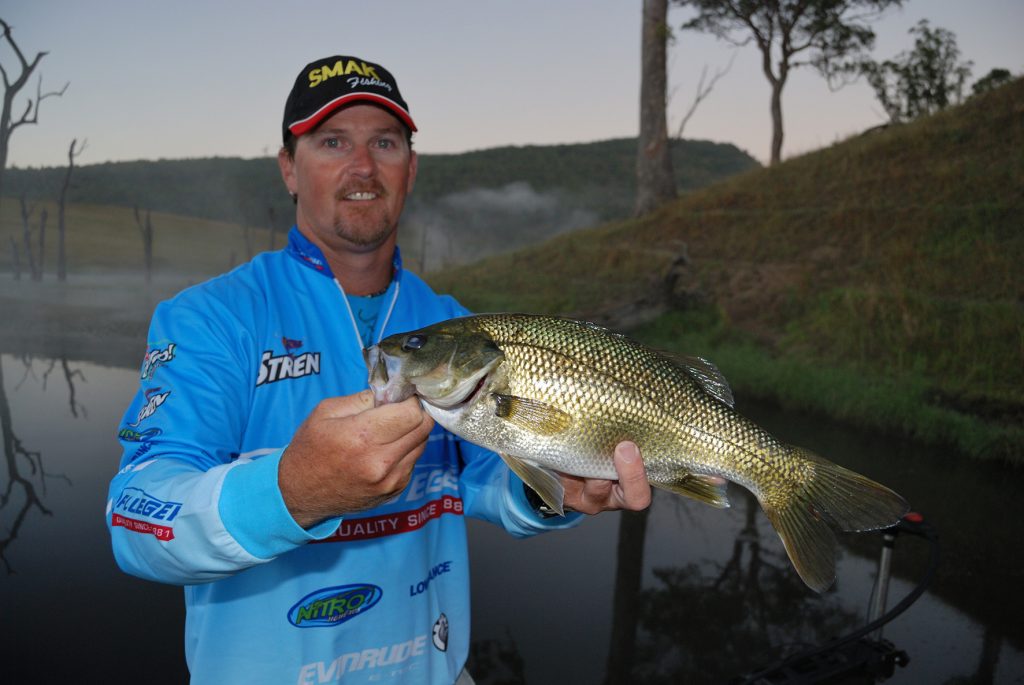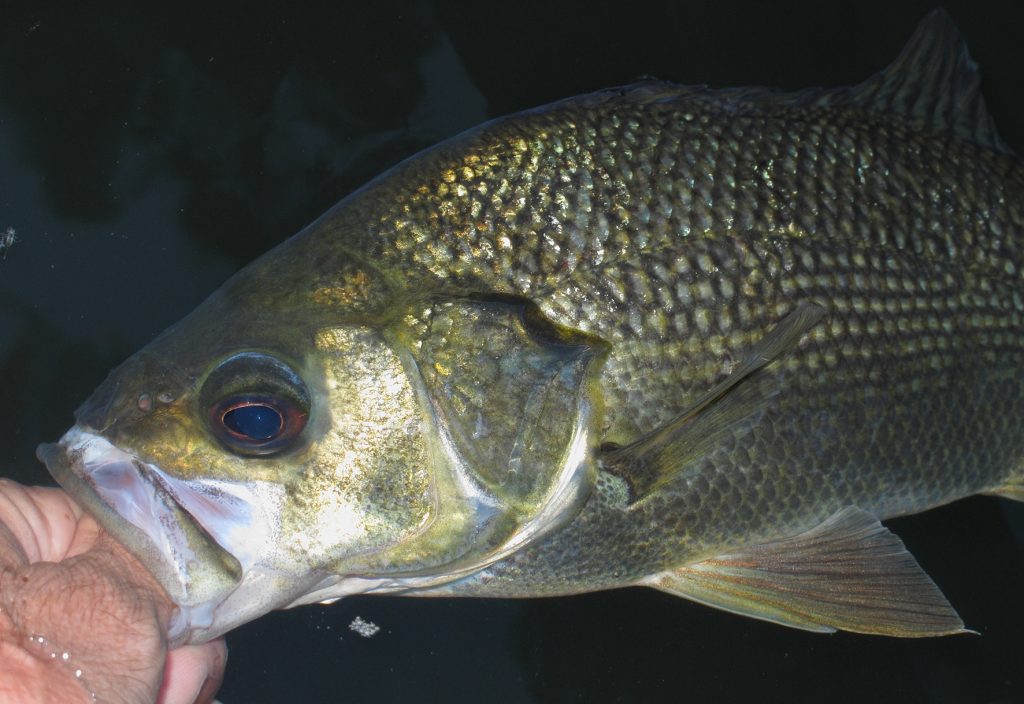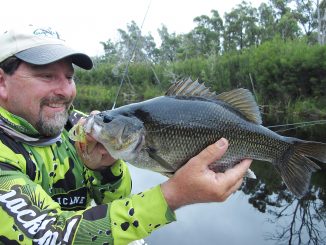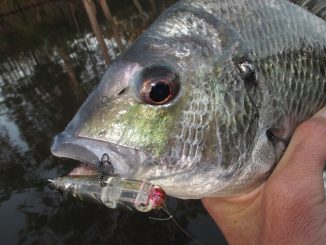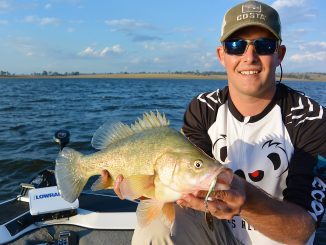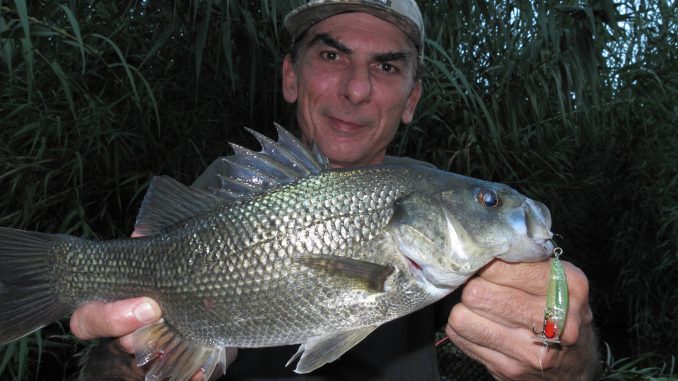
by Jamie Robley •
A new bass season is upon us and keen anglers have stocked up on new lures and serviced their reels, all ready for the good times ahead. Unfortunately, things might not kick into gear just yet, as water temperatures are still on the cool side.
Bass eat and can be caught in cold water, but angling outcomes depend on a few different factors. Overall, bass are more inclined to be active and on the prowl in warmer water, especially during the height of summer when insects and aquatic life are out in full force. Bass also eat during the guts of winter, when they’re in spawning mode. However, their habits in warm and cold water are different.
A gradual increase in temperature will take place over the coming weeks, and generally equates to reasonable fishing, providing there are other favourable factors, like decent weather. A gradual decline in water temperature, during the autumn months, is still good for bass fishing in rivers and impoundments. That’s the time of year bass may be trying to gain body fat for the upcoming winter.
A sudden drop in water temperature really switches bass off, though. If an unseasonably severe cold snap hits during the warmer months, then bass react accordingly. Anglers that aren’t used to it, or not properly prepared, can be switched off a too! Bass are more likely to drop to the bottom and sulk for a day or two, until they adjust to the temperature or simply get hungry. Catching bass immediately after a strong cold snap can be quite a challenge.
Sudden, heavy rainfall may also cause river or impoundment water to drop a few degrees. Rain that causes flooding may bring water from a stable 22°C down to 15°C or less within a few hours. That’s too much for fish to cope with, and they’ll seek out warm water down deep, or take refuge from strong currents rather than look for food. That’s ok, as we’re unlikely to be out there fishing during a major rain event anyway.
A week or more after a flood, food becomes important to bass again. They may be pushed downstream, or move to deeper sections of a river or impoundment. Anglers have to look for them, but once found they are likely to be caught. Bass can also move to shallower places, as higher water levels allow them access to potential food sources they couldn’t normally reach.
The way bass move in creeks or rivers when it floods largely depends on the time of year. In a flood during late autumn or early winter, they’ll take advantage of the free ride and head downstream for spawning. If a similar rain event occurs in September or October, the opposite is likely – bass will use the higher water levels to negotiate weirs, fish ladders or rapids as they head into the upper reaches.
Looking at temperatures alone may not hold the real key to success. In 2014, we experienced a hot start to spring and a number of September days over 30°C. The heat kept increasing as October came around. Enthusiastically, I made the trip to a favourite north coast river in early October, hoping all the warmth had the bass sparked up. In two sessions, I failed to see any sign of bass at all. I decided to abort plans and head back home.
The mistake I made was not taking the exceptionally dry weather into account. With little rainfall during the second half of winter, in the weeks leading up to my trip, bass simply hadn’t migrated to the places I was trying to fish. Sure, the water was nice and warm, with plenty of insects around, but the bass weren’t there.
A month later, after some rain, I made the same trip and, sure enough, the fish were there. Success came my way, even though the water wasn’t actually as warm as the previous trip. Although water temperature is one of the most important things to consider when it comes to bass fishing, we always need to see other factors in the equation. The barometer, wind direction, moon phases and weekend or holiday fishing pressure all have impacts.
LURE SELECTION
If the water only seems marginally cool, then usual bass favourites will work. Be persistent, but if it’s noticeably colder, some lure types tend to be better than others.
The main cold water bass lures to consider are spinnerbaits, chatterbaits, small vibes, soft plastics and suspending hardbody divers. If the water is a stable cold, as opposed to water that’s suddenly dropped in temperature, surface lures still work ok. It’s better to try a really small, subtle type of surface lure, or a much larger, noisy model, with spinning blades or paddlers that make some commotion. Usually, surface lures are best reserved for warmer water.
In timber lined rivers, where bass are found in snags, a suspending hardbody lure is good. It can be cast into the timber without too much risk of getting snagged. Spinnerbaits and lightly or unweighted soft plastics are also reasonably snag resistant.
Out in open water on bigger rivers or impoundments, snags are less likely, so a full range of sinking types can be put to use. Of these, my first choices would be spinnerbaits, chatterbaits and small metal vibes like the Ecogear ZX30 or 35. If it’s extra cold, and you’re using a sounder to locate deeper or schooled up bass, consider small plastics or ice jigs, as they are better for vertical jigging presentations.
Clear, cool water may mean it’s necessary to employ a light 2kg fluorocarbon leader or mainline to help score bites. Of course, ultra-light leaders should be avoided around snaggy timber or dense weed, but they’re great for the open water, away from trouble.
RETRIEVE TECHNIQUES
The general theme of cold water lure fishing is slower and deeper. Bass fishing is no exception, so that’s the first thing to remember. With any sort of fishing, there are no hard and fast rules that always work, or should be adhered to, so it’s worth experimenting to see what’s best on the day.
Early in this season when water is warmer, but mainly on the cool side, it’s hard to go past a spinnerbait, chatterbait or sinking vibe, slowly and methodically bounced along the bottom. This is a similar approach to working a soft plastic for flathead in the salt, with a series of lifts and sinks, while cranking to wind up the slack in the line as you go. Colder water means a slower retrieve. Even in typical upstream creeks, this works well, quite often if you cast out into the middle, rather than the traditional approach of hitting the banks. If that doesn’t work, cast to the banks again or vice versa.
If you’re using suspending hardbodies, cast into timber, up against an undercut bank or into a clear pocket among weeds. Rather than a straight wind, crank the lure down quickly, with four or five turns of the handle, then leave it motionless for as long as possible. This is where the appealing, suspending side of things comes into play. While the lure is motionless, it’s also important to avoid a slack line between the lure and rod tip. This can be achieved by very slow and subtle winding, or by moving the rod tip back a bit, without pulling the lure away.
Pauses can be as long as you like, but even the most finely tuned suspenders will eventually sink or rise a bit. As a starting point, pause for five seconds and see how things pan out from there. If it works, the fish will soon let you know.
As is the case with selecting a location, time and lure, finding the right retrieve technique can be a matter of experimenting on the day. Fishing with a mate or a small group always helps, as someone is bound to strike the goods. The others can then try the same. I’m a solo man when it comes to bass fishing, so this advice has been learned over many years, under all manner of weather and water conditions. We can all get it wrong and make mistakes, but that’s the challenge of chasing bass, or any fishing. Good luck, have a great bass season!

